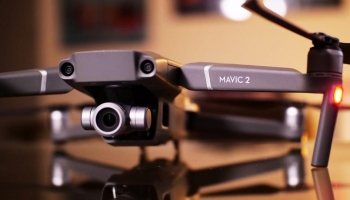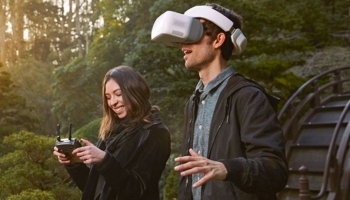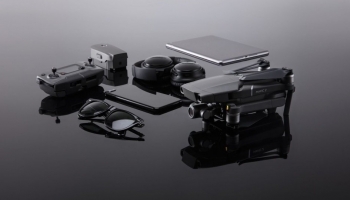If you recently got your very first drone, congratulations on becoming a drone user. But, if you are still checking on these drones out and want to know important flying tips beforehand. You have come to the right place because you will find these top 12 important flying tips for new drone pilots important. You will need to know these flying tips so to ensure that your experience goes smoothly. After all, you don’t want to end up crashing one of your professional-grade camera drones, right?
According to a recent report by the Federal Aviation Administration, the number of hobbyist drones is set to grow to 2.4 million by 2022. The number of commercial drones will be expected to grow to approximately 451,800 and the number of licensed remote pilots will increase to 301,000 in the respectively same year. As more people are picking up drones, flying safely in the skies has become a top priority.
This is why I think it is important to share my top 12 important flying tips for new drone pilots. It doesn’t matter how experienced you are since you might learn something new along the way. That’s what makes it worthwhile to know these top 12 important flying tips for all new drone pilots. So, stick with us to find out how our flying tips can help you become a better remote pilot and create a safer sky for your fellow drone users.
Always Perform Pre-flight Inspections
Always perform a pre-flight inspection before you fly your drone. You will need to create a checklist to follow through such as ensuring the battery is full and checking that the motors are running properly. This is one of the most important flying tips that you need to make a habit with every drone you own. Because following through during the inspections will ensure your drone runs fine so to minimize damage and avoid losing during the flight sessions.
If you own one of those professional-grade camera drones such as the Mavic 2 or Phantom 4. You would notice that they are already outfitted with a built-in pre-flight inspection feature that automatically analyzes the drone. If they spot something is wrong, they will notify you automatically so that you can take corrective actions. Inspect your drone every time before you fly and make it a habit.
Make Sure The Batteries Are Fully Charged
Before you plan to fly your drone, you need to make sure the batteries are fully charged. If you have a flight project or plan to fly around recreational, you need to charge the batteries so that they can be ready. I don’t recommend charging the batteries within 24 hours before your flight session as you will need to give them at least a couple of days or so for a time.
Furthermore, you need to charge the drone batteries at room temperature. This is done for a good reason to achieve optimal charging time. If you charge the batteries in the cold room, they won’t charge as fast as the batteries do at room temperature. Also, you should avoid charging batteries at a hot temperature as it will cause the batteries to charge fast and use up the battery cell quickly.
Related Article: The Ultimate Guide to Taking Proper Care of Your Drone Batteries
Don’t Overextend Yourself
This is another top 12 important flying tips that all new drone pilots need to know before flying their quadcopters. As a general rule of thumb is not overextending yourself while flying your drone. For any reason, if you feel uncomfortable with the position your drone is at. You should immediately recall your drone or adjust to factors that you are comfortable with.
For beginners, I recommend restricting yourself within a small remote-control distance. You should practice flying around until you understand the basics of flight controls. Not just only that you will become adept at flying the drones, you will learn to understand how well your drone can handle factors like wind, maneuvers, and flight speed. Once you have a firm grasp of your drone, you can work on pushing your boundaries to a new comfortable level.
From my personal experience, I took a few practice sessions with my Mavic Pro to understand the basics of flight controls and its features. Over multiple flight sessions, I have started extending my drone at a great distance and incorporate advanced aerial vulnerabilities. So, don’t be afraid to challenge yourself to a whole new experience.
Maintain a Clear Visual Line of Sight
This is one of the issues that I see commonly with new drone pilots. They don’t pay attention to where their drones are flying at. As number four most important flying tip for all-new drone pilots is to maintain a clear visual line of sight. No matter how experienced you are, new or professional, you need to keep an eye on your drone’s surroundings.
Toy-graded consumer drones should be kept within your line of sight. If you can’t see where your drone is going, then you need to adjust your position or limit the operating distance. For smart camera drones, there is a whole new level of skill that requires your awareness. As they typically deliver video in real-time to your mobile device or remote controller, your vision is limited to what the drone’s camera can see. Therefore, you need to be able to scan and be aware of where the objects are to maneuver effectively.
Related Article: How to Interact With Curious People While Flying Your Drones
Check Weather Before You Fly
All new drone pilots always pay attention to their local weather. Drones don’t fly that well in heavy weather conditions with an exception for some professional-grade camera drones such as the Inspire 2. I don’t highly recommend you doing that as it will diminish your flying experience. So, if you want to enjoy flying your drones, then you need to fly during the best optimal weather conditions.
Most of the professional-grade camera drones can handle wind speed up to 22.5 miles per hour. With some exceptions that the drones can handle moderate wind at higher maximum flying speed. Always make sure to check your local weather if you are going to capture beautiful aerial shots with your favorite quadcopter.
Avoid Losing Signal Mid-flight
For the best flight practice, you should avoid losing signal during your flight session. It is just about the worst thing that can happen to any drone pilot. For new drone pilots, it is common to scramble and try to figure out how to re-establish a signal connection. Here is friendly advice from me to those new drone pilots who fly in urban areas. There is a higher risk of losing signal since it is packed with so many radio signal interferences.
I generally prefer to fly my drone in open space because there isn’t a lot of radio interference. Plus, plenty of flying space that won’t bother your drone during your flight session. Also, do not fly your drone too close to the radio towers since it is packed with a high radio signal. If you do need to capture aerial shots of the radio towers for projects, make sure that your drone has established a strong GPS signal first before take-off.
Related Article: How to Buy A Drone: The Ultimate Guide for Beginners
Register and Label Your Drone
It can be very exciting to start flying the drone right out of the box. But in events where you end up losing your drone, you will want to retrieve it. So, you will need to register your drone with the Federal Aviation Administration. You also should label your drone with a small white sticker with your phone number and name.
That way if someone found your drone, they can contact you and return the drone. This is a must-have if you fly an expensive drone such as the Mavic 2 and Phantom 4 Pro. For small cheap toy-grade drones, it is completely optional. However, I do encourage you to do this practice as the drones are your assets.
Be Aware of Your Surrounding
The next important flying tip for all-new drone pilots is to be aware of your quadcopter’s surroundings. Not just that you need to pay attention to the drone, but you must be also aware of your surroundings too. Check around yourself and see what you see. Make sure you know where the objects and subjects are. So, scan around for a moment, including checking downward and upward to be sure there is nothing that potentially could interfere with your drone’s flight session.
An experienced remote pilot will always make sure that they are aware of their surrounding. This is often of the leading reasons for how you can ensure a safe flight landing after it is time to end your session for resting or to replace it with a fresh battery pack. Make this a habit to practice and keep your drone in check.
Related Article: Top 10 Best Drones Under 500 for Beginners: The Ultimate Guide
Grab Extra Parts
No matter where you go, you will need to bring extra spare parts if you need to replace it. A lot of experienced remote pilots bring extra propellers and batteries just in case. On some events should you accidentally chip off a portion of the propeller that reduces the drone’s performance?
You should have at least four extra propellers to replace the damaged ones so that you can get the drone back into the air. Would you rather delay the flight session because you don’t have extra propellers to replace the broken ones or enough batteries to cover the whole project? I think not so!
Make Sure You Have Plenty of Memory Storage
This is one of the easiest things to forget. It even happens to professional remote pilots and it can suck if you prepare to take off only to find out that you don’t have a micro SD card inserted or that the memory capacity storage is maxed out. That can lead to a waste of time and loss of money that should be avoided at all the cost.
Before you take your drone with you, make sure that the micro SD card is inserted. Also, check to see if you have plenty of memory storage remaining on the card. If not, then you need to format the card and create space for your next flight projects. Keep this tip in your mind.
Related Article: Top 15 Best Foldable Drones For Beginners: The Ultimate Buyer’s Guide
Clean the Camera First Before Flying
Before you fly your drone, clean the camera lens first. You don’t want to fly your drone around and capture shots only to find out that there are smudges on the camera. These can be quite annoying and impacts the quality of aerial shots. So, you will want to buy a professional cleaning kit for the camera that will make the lens sparkling brand new.
That camera cleaning kit is also great for everything else like your DSLR camera or glasses. Consider it the ultimate cleaning kit for all your camera and lens. Plus, make sure you also clean the camera filters that come with the drone if you plan to use them. Swab both inside and outside to ensure there are no smudges or any tiny particles that could block your camera from capturing the full details.
Finally, Enjoy Flying the Drones
Finally, and the most important flying tip for all-new drone pilots is to enjoy yourself. No matter what drone you bought or own, you should enjoy flying the drone around. Perhaps perform some aerial tricks to impress your audience who is watching you zipping and zooming the drone around. Furthermore, you should take advantage of capturing aerial shots from a whole new level of aerial perspective that has never been seen before.
Either way, enjoy flying your drone. And that concludes my top 12 important flying tips for new drone pilots. In the final section of this article, I will provide advice for new drone users who wants to learn and master piloting their quadcopters. Stick with us for more tips, remarks, and recommendations.
Related Article: Best Camera Drones for Sale Ultimate Guide
Fly Smart with These 12 Drone Tips
I hope you found my top 12 important tips for new drone pilots helpful and insightful. If you thought so, please feel free to drop a comment in the comments section to let us know. These top 12 important tips for new drone users should help you learn and master on piloting the quadcopters. Not just only that you will become a safer remote pilot, but also smarter, aware, and knowledgeable. If you have something to share along with these top 12 important flying tips for new drone pilots, feel free to share with us!
For those who are new to drones and have no prior flying experience. I highly recommend you to check out our ultimate guide & tips page. It consists of curated tips, guides, and tutorials that cover a wide range from drones to FPV goggles to choosing the best mobile devices for a smooth real-time experience. Be sure to head over there if you are planning on grabbing your very first quadcopter!
Keith Ericksen
Hello, welcome to UAV Adviser! My name is Keith Ericksen. I am a commercial licensed drone operator. Flying and talking about the drones is my passion. Whether it is toy-grade to professional-grade quadcopters. On my leisure, I enjoy socializing with friends, play video games, hiking, traveling and reading. If you have a project that needs our drone services, please contact us via Hire-A-Pilot page.




![10 Best Drones Under $200 [Updated October 2020]](https://www.uavadviser.com/wp-content/uploads/thumbs_dir/Top-10-Best-Drones-Under-200-The-Ultimate-Guide-for-Beginners-1w7utbwce380i2n2gubgzgfures9hn5jwaae444r41ic.jpg)

